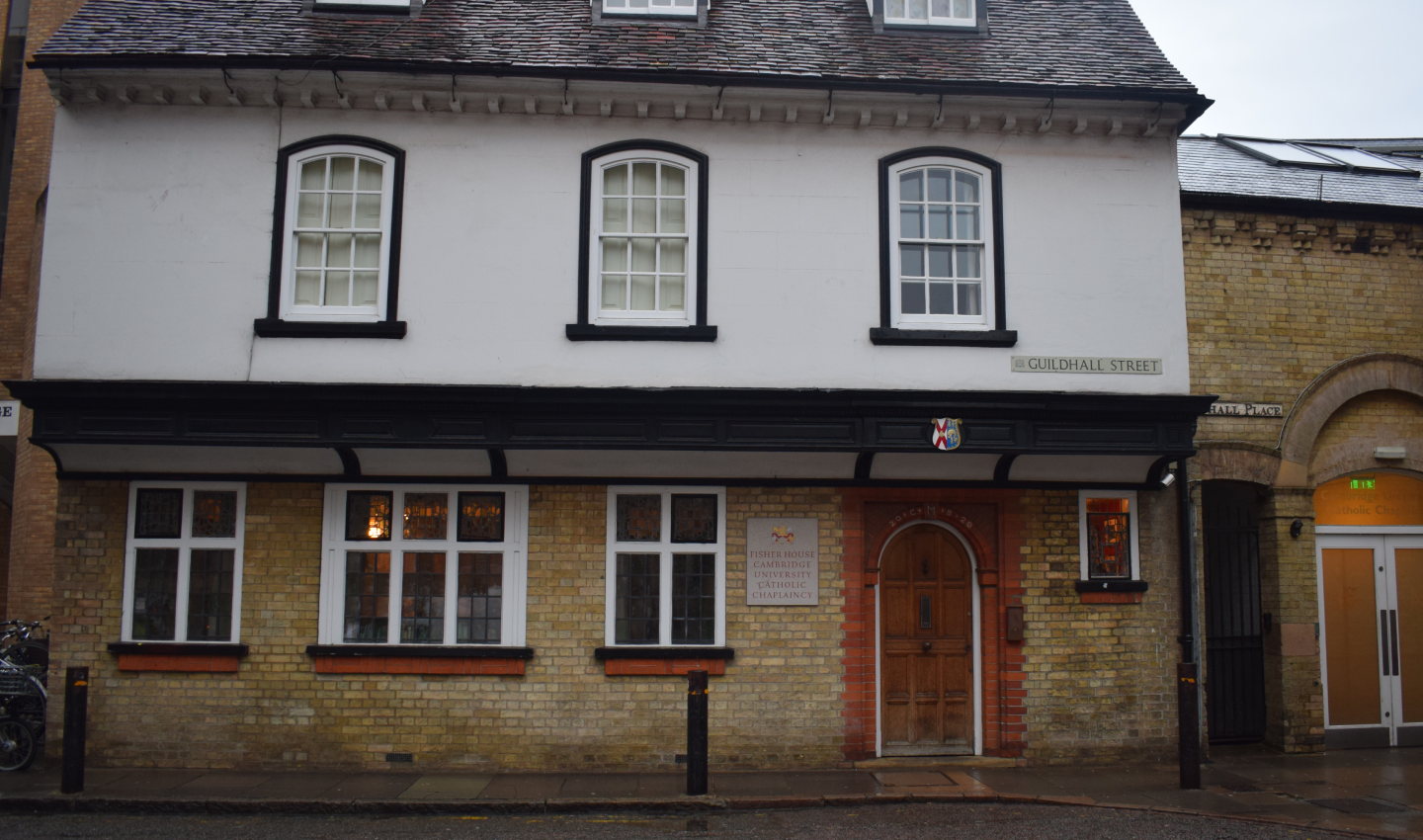about
the history of fisher house

Foundation and Early Years (1871-1924)
The universities of Oxford and Cambridge opened their doors to Catholics in 1871 after the repeal of the Test Acts, which had excluded Catholics from the ancient universities. Nonetheless, the Catholic hierarchy, believed that it would be impossible for the students to attend Oxford and Cambridge without being corrupted by what was perceived as an increasing atmosphere of liberalism and scepticism. Therefore, it arranged for the Holy See to forbid Catholics to attend, and sought instead to found a Catholic university in London. This decision was met with public outcry from wealthy laity who wished for their sons to attend Oxbridge colleges.
Following the death of Cardinal Manning, who had been implacably opposed to Catholics attending Oxford or Cambridge, a petition, led by the Catholic Cambridge Fellow Baron Anatole von Hügel, was presented to the Holy See and the Bishops of England and Wales. He was successful and the ban was lifted in 1896, with the condition that a chaplaincy be established in each university, with a Chaplain, Library and Oratory, to provide pastoral support, worship, and teaching on philosophy, history, and religion. As a consequence, the Oxford and Cambridge Catholic Education Board (OCCEB) was founded, and Henry Fitzalan-Howard, 15th Duke of Norfolk, purchased property at St Edmund’s House, where the Catholic Chaplaincy was established, with Fr Edmund Nolan as first chaplain. The first lectures were given by Cuthbert Butler OSB, entitled ‘Questions of the Day’. At the same time, the Fisher Society was established by Cambridge students as a literary and debating society. In 1899, the Cambridge University Catholic Association (CUCA) was founded, and purchased rooms for the Chaplaincy at 2 Green Street. Later, under Monsignor Arthur Barnes, the chaplaincy moved to Llandaff House near Downing College. After the Great War, Fr Bernard Marshall became chaplain at 50 Bridge Street, and then 2 Round Church Street, next to the Union.
DEVELOPMENT & CONSOLIDATION (1924-1965)
In 1924, a Grade II listed pub called the Black Swan was purchased by CUCA for £10,000. The Chaplaincy was moved there and named Fisher House. Fisher House consists of properties of different ages. It originally comprised two small 16th– and 17th-century houses adjoined at right angles, the first lengthways to Guildhall Street, and the second at right angles to it on the east side, linked by a building.
The earlier house, from the late 16th century, overhangs the street, while the other, containing the Dining Room, kitchen and Great Chamber, and the chaplains' living quarters, is of the early 17th century with medieval cellars. The site included a Victorian billiard room, and a large courtyard, which later housed the two-storey chapel. These properties were substantially remodelled in the 17th or early 18th centuries. In the later period, one part of the building was the Black Swan public house, which was later enlarged with a two-storey addition, the brick façade of which is still clearly visible on Guildhall Street.
Fisher House was officially opened on 4 May 1925, at that time the feast of Blessed John Fisher. In 1937, a women’s chaplaincy was founded at Lady Margaret House, and was merged into Fisher House in 1966.
In the mid-1960s, with the decision to requisition a large number of properties in the medieval heart of Cambridge to make way for a shopping precinct, Fisher House was threatened with demolition. Its listed status, acquired at this time, and a vigorous campaign on the part of CUCA and the chaplains, helped save it from demolition - but the shopping precinct, Lion Yard, was built all round it and completed in the early 1970s.
Monsignor Alfred Gilbey was chaplain from 1932 to 1965; he was a renowned and much-loved figure who fought to prevent Fisher House being demolished for redevelopment. He left Fisher House in 1965, after it had decided to admit women. Following his death in March 1998, Mgr Gilbey was interred in the courtyard at Fisher House.
FISHER HOUSE TODAY (1965-)
Mass was originally held in a chapel in an upper room, but in 1967, work was started on a new hall and side chapel. The new Chaplaincy buildings were opened for worship in 1976.
In 2005, a reconstruction of a c. 1280 Cimabue crucifix was commissioned from the Hamilton Kerr Institute by the Chaplain, Fr Alban McCoy. This artwork was created according to contemporary medieval Italian methods, and was completed in March 2008. It was installed at Fisher House and consecrated by Cardinal Cormac Murphy-O’Connor. Until 2008, the hall, used for Mass on Sunday through a moveable altar, was rented out during the week to market traders to provide income, and was also the focus of the Chaplaincy’s social events. In 2008, after a successful appeal to raise £2 million, it became a permanent place of worship. This endowment fund included a personal donation of 3,000 euros from Pope Benedict XVI, who had stayed at Fisher House while delivering the Fisher Lecture in January 1988, in a bedroom now known as the ‘Ratzinger Room’.
In May 2015, when Mgr Mark Langham was the Chaplain, the chapel was completed with the addition of a stone altar, containing relics of some of the Cambridge martyrs. It was consecrated by Archbishop Malcolm McMahon of Liverpool and provides a worthy centre for the worship which is the foundation of life at the Chaplaincy.
